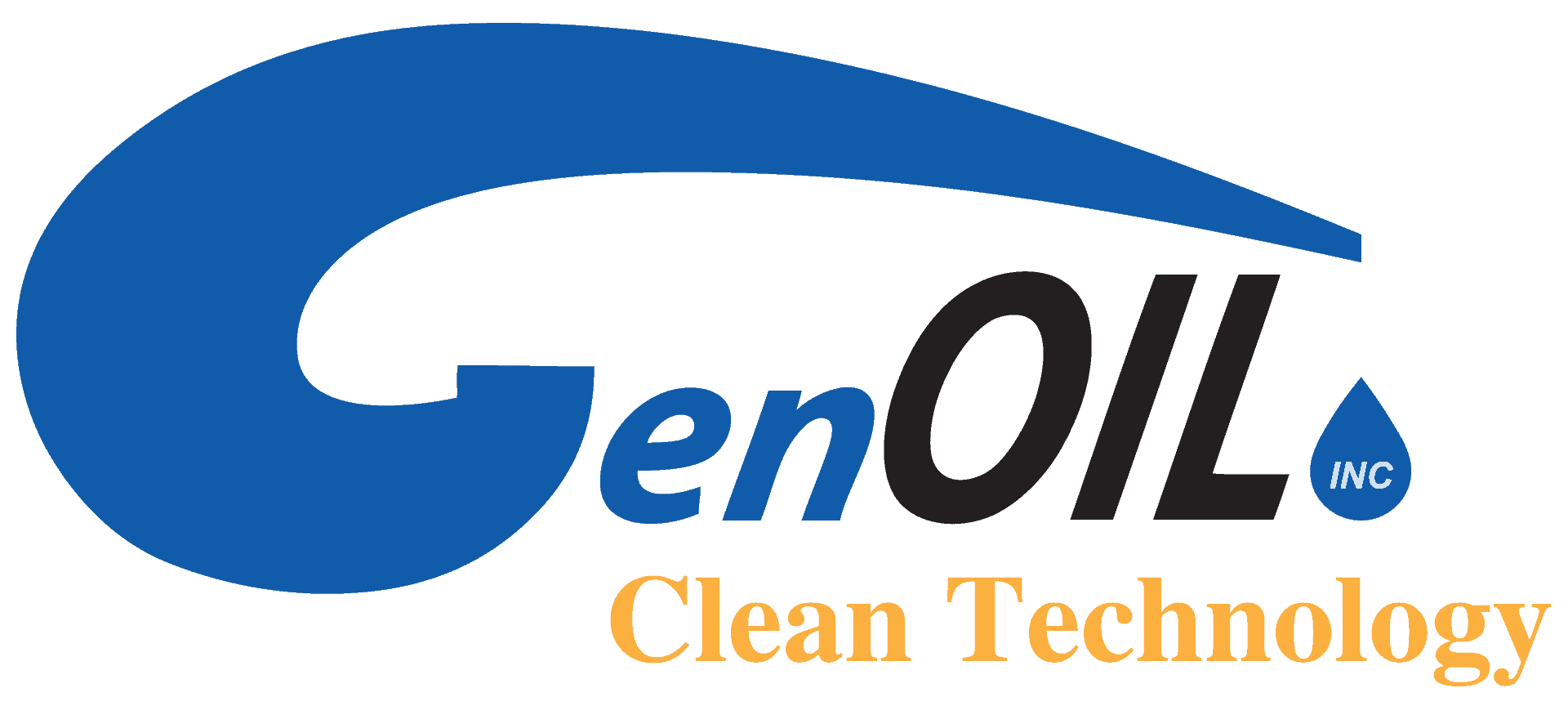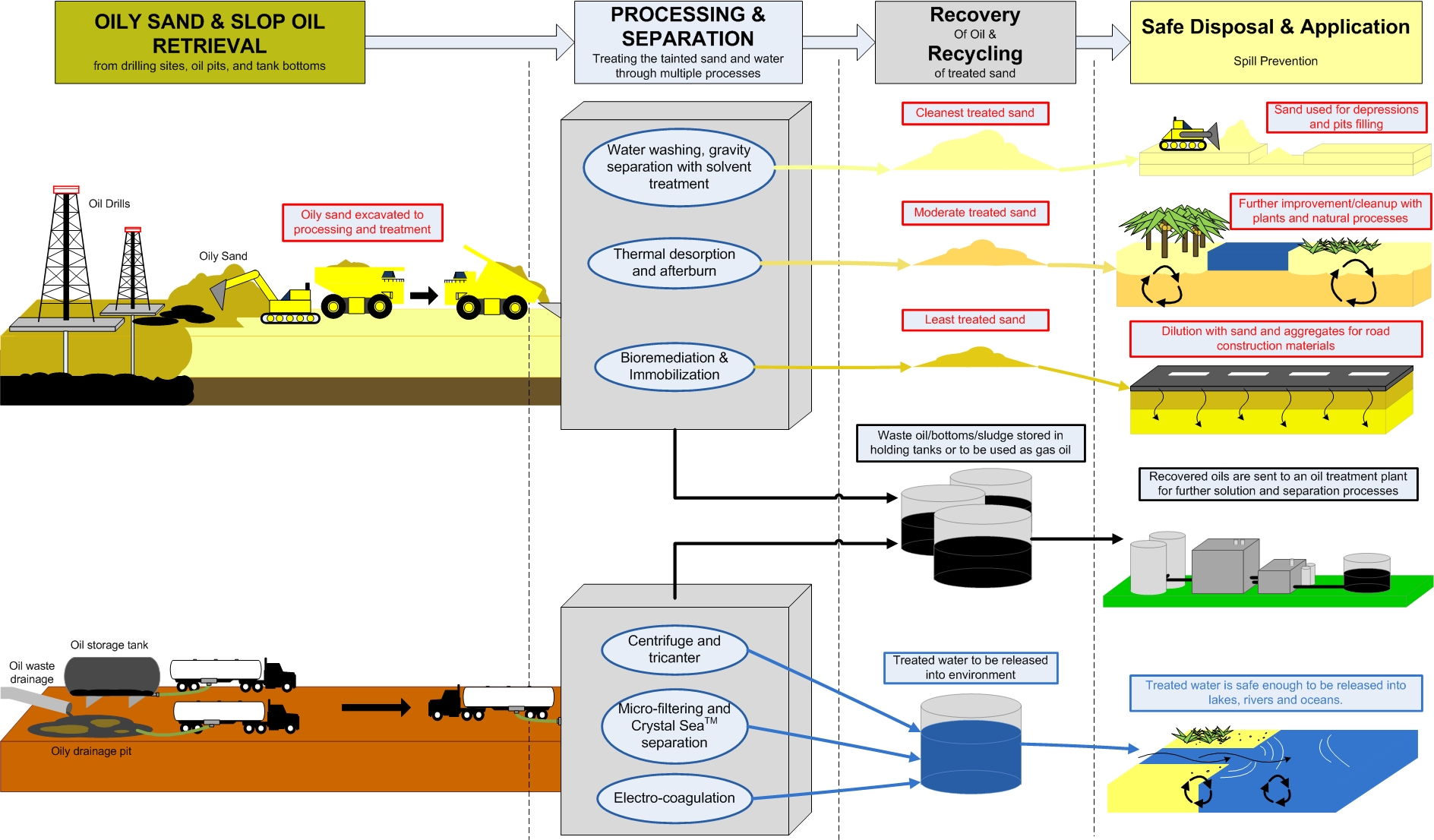
Refineries around the world produce nearly ten million barrels of unusable oil each year. Add to that the annual worldwide well production of “Tank Bottoms/Sludge” which is a by product of the oil fields. Tank bottoms may also accumulate in tanks used for storage of fuels such as gasoline, fuel oil or diesel and jet fuel. There is no tank in the world without bottoms. This environmental problems associated present a severe costly disposal and treatment problem. Traditional methods use costly chemicals to treat this problem. Most oil goes untreated and is disposed of in waste pits scattered around the world. Some of these waste pits are extremely large and can exceed 250,000 barrels. Waste pits are known to contaminate local groundwater and cause unwanted health problems if found to contain Arsenic, Barium, Cadium, Chromium, Lead, Selenium and Benzene. All attempts to treat these tank bottoms use either chemical or thermal treatments resulting in a more unwanted water solid mixture left behind. This “Dead Oil” presents an even more difficult challenge. Genoil’s environmental rehab actually pays for itself. See indigenous people of Ecuador vs Chevron.

Genoil has introduced to the market the most profitable and sophisticated self supporting slop oil treatment process in the world. Treating slop oil solves dangerous pollution and storage problems. All slop oils can be upgraded and mixed with crude oil to be processed in the refinery. Currently slop is an enormous burden to oil companies local communities and governments. Genoil’s R & D team has come up with a proprietary process which utilizes many new technologies working in conjunction with the Crystal Separator. Our process ensures efficient slop oil treatment and can upgrade many different types slop oil from oil fields, tanks, ponds, refineries and industry into valuable, marketable product. Genoil guarantees an immediate payback. Slop oils have tremendous variation in composition both chemical and physically. A common thread is that they contain both water and solid impurities, large and small. Often the oil and water form a very tight emulsion. Our process produces drinkable water and clean oil.
The first requirement of a profitable slop oil recovery system is the speed and efficiently that it can separate the three phases. The second is that it is works well enough to sever the closely bound emulsion and separate the smallest particles. The main characteristic trait of slop oil is that oil and water form an emulsion stabilized by ultrafine solids, extremely difficult to separate. Slop-oil or waste oil must go through purification in order to be used as fuel in waste oil fired boilers or incinerators, or be sold to refineries. Purification is carried out in several steps involving the removal of solids and water.
Click on the diagram for the full version
The system features a preliminary step capable of separating oil, water and solids from slop oil or emulsified sludge. Preliminary three phase separation is followed by further treatment of the resulting phases in order to enhance product quality, purify the water and safely dispose of solid impurities. Filtration occurs in two stages devised to reduce solids to 25 and 10 microns respectively with specifically desinged filters. Periodic filter media replacement is eliminated with obvious advantages in terms of costs, downtime and maintenance.
A flow meter measures the amount of slop-oil delivered to the cistern. The data is recorded and stored for 18 months. The flow meter is very accurate and impervious to changes in oil viscosity. The oil content is reduced below 5 PPM and water is then sent to the electro-coagulation unit. Heavy metals, dissolved contaminants and pathogens are eliminated completely in order to meet water purity EPA standards.
When superior oil dryness is required, the system also include an optional stage that dehydrates hydrocarbons to 500 mg/l water content. Furthermore, this stage is capable of reducing the particle count to ISO 14/12/9 cleanliness levels without utilizing any filters.
Water exiting the first stage contains only 2% oil, which is then completely removed in two separation steps. They employ Genoil’s Crystal and Crystalline Units respectively. Technologies pioneered by Genoil after sustained efforts and research. As recent certification attests, Crystal OWS is capable of exceeding IMO MEPC 107 (49) requirements without filters. To achieve 0 mg/l in the most exacting conditions the system comprises a polishing unit that operates without filters. This is the only such system capable of these results, and also has the lowest cost of operation of any slop oil system in the world.
After complete oil elimination, water is processed in another stage for removing heavy metals typically contained in sludge. An additional benefit of this step is the destruction of pathogens. As a result the effluent exiting the water treatement plant is remarkably clean and can be disposed of without restrictions.
The Genoil slop-oil purification plant is compact enough to be installed in a 40’ container. The preparation of the site is to be done by a construction firm which will also make the required calculations for concrete floor thickness, foundations, etc. The site, including utilities, should be ready to receive the treatment plant before the latter is delivered to the port. The required area of the site including access roads is approx. 450 square meters.


